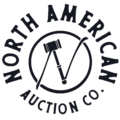For your consideration is this collection of fifteen decorative and souvenir sterling spoons circa 1890-1950s. The collection shows finely crafted silver utensils, with the first in this collection being from Holland. There are nine spoons made in Holland. The first two spoons were made in Delft, Netherlands with one showing the Oude Kerk, a gothic Protestant church in the city center of Delft and the other showing the Nieuwe Kerk, a 15th century church in Amsterdam next to the royal palace. The back of the necks of the spoons show Dutch stampings, while the tops show the locations with the locations underneath them. The next two spoons were also made in Holland and show "Made in Holland" stamps on the back of the necks. The tops of the spoons show the traditional Dutch shoes, klompens, painted white and blue, while the necks of the spoon are intricately designed. One of the spoon bowls shows a repousse image of a man and a woman with a windmill in the background. One spoons sculpted klompen has been glued on. The next spoon was made in Holland and shows a small bowl, and skinny neck and a detailed top piece. The top piece shows three men holding up a globe while another man stands on top with a flag. Below the top piece it reads, "Panama City". The sixth and largest spoon of this collection shows Dutch stampings in the bowl and a large top piece. The bowl shows Dutch stampings with one being a "P" indicating that it was made in 1925, and a lion passant indicating the quality of the silver. The bowl of the spoon features a repousse design of the Waag in Alkmaar on the Waagplein. The history of the building goes back to the 14th century. In that period the building was used as a chapel and where travelers could get free housing for 3 nights and 3 days as well as get medical treatment from nuns and monks. The neck of the spoon shows intricate designs with beads of sterling on the front and back. The top piece shows two men carrying something in a large bag. The seventh and smallest spoon in this collection was made in Marken, Netherlands circa 1950s and is marked on the back of the handle reading, "Marken". This spoon is silver plated. Marken is a peninsula in the Markermeer, in the Netherlands and a former island in the Zuiderzee, located in the municipality Waterland in the province North Holland. No makers mark is present. The spoon's top piece shows a man carrying two buckets over his shoulders as he looks towards the viewer. The spoon shows a twist style neck, with small, illegible stampings on the back of the neck. The eighth spoon is coin silver and was made in Apeldoorn, a municipality and city in the province of Gelderland in the center of the Netherlands. The top piece of the spoon shows the crest with a bird spreading its wings and a crown on top with it reading, "Apeldoorn" below the crest. The back of the neck of the spoon shows a stamp reading, "NIO 90". The final spoon in this collection from Holland shows no markings or stamps. The inside of the bowl is stamped with a crest of a lion with a crown on top of it. The neck is highly detailed and shows a partial twisted neck. The top piece of the spoon shows a woman with her arm over her head holding part of her clothing to the side. The next six spoons were made in Matoba, Japan circa 1950s. The back of the bowls are stamped reading, "Sterling Silver". These demitasse (coffee) spoons feature a unique Oriental finial at the top of the handle the handle showing a bucket, a pillar, a Buddha, a tea pot, a Torii and a small house. The necks of the spoons feature three small notches to enhance the grip. All the spoons in this collection show good condition with no signs of obvious damage present. The spoons measure from 5 15/16" L x 1 7/16" W to 3 7/8" L x 13/16" W. The collective weight of the spoons is 163.4 grams.

































